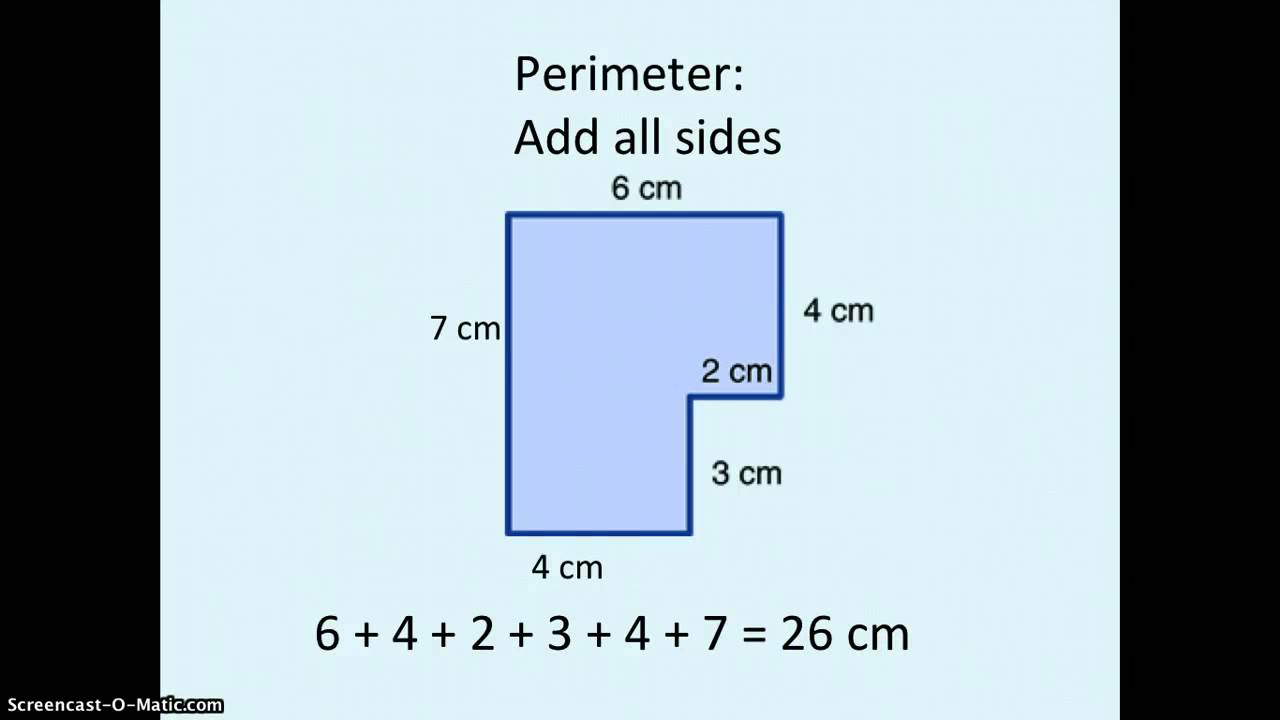
Understanding Area and Perimeter of Irregular Shapes
Interactive Video
•
Mathematics
•
6th - 10th Grade
•
Easy
+3
Standards-aligned

Wayground Content
Used 13+ times
FREE Resource
10 questions
Show all answers
1.
MULTIPLE CHOICE QUESTION
30 sec • 1 pt
What is the first step in finding the perimeter of an irregular shape?
Multiply the length by the width
Subtract the smallest side from the largest
Add up all the sides of the shape
Divide the shape into smaller shapes
Tags
CCSS.3.MD.D.8
2.
MULTIPLE CHOICE QUESTION
30 sec • 1 pt
How many centimeters is the perimeter of the given irregular shape?
24 cm
36 cm
26 cm
30 cm
Tags
CCSS.3.MD.D.8
3.
MULTIPLE CHOICE QUESTION
30 sec • 1 pt
What is the first step in calculating the area of an irregular shape?
Estimate the area visually
Multiply the longest side by the shortest side
Divide the shape into smaller, calculable shapes
Add all the sides together
4.
MULTIPLE CHOICE QUESTION
30 sec • 1 pt
Why are the measurements of seven and two crossed out in the example?
They are not needed for the perimeter calculation
They are errors in the measurement
They represent the shape's diagonals
They do not apply to the rectangles formed
Tags
CCSS.6.G.A.4
5.
MULTIPLE CHOICE QUESTION
30 sec • 1 pt
What is the purpose of dividing an irregular shape into rectangles?
To make it easier to visualize
To simplify the calculation of the perimeter
To simplify the calculation of the area
To reduce the number of sides to calculate
6.
MULTIPLE CHOICE QUESTION
30 sec • 1 pt
What are the dimensions of the top rectangle used to calculate the area?
Length 6 cm, Width 4 cm
Length 4 cm, Width 3 cm
Length 7 cm, Width 2 cm
Length 5 cm, Width 4 cm
Tags
CCSS.3.MD.C.7B
CCSS.4.MD.A.3
7.
MULTIPLE CHOICE QUESTION
30 sec • 1 pt
What is the area of the bottom rectangle?
12 square centimeters
24 square centimeters
18 square centimeters
14 square centimeters
Tags
CCSS.6.G.A.1
Create a free account and access millions of resources
Similar Resources on Wayground

12 questions
Finding the Perimeter of Polygons 1
Quiz
•
3rd - 8th Grade

15 questions
Decomposing to Find Area
Quiz
•
6th Grade - University

10 questions
Length Objects
Quiz
•
1st Grade - University

15 questions
Measure in Centimeters
Quiz
•
2nd Grade - University

14 questions
Surface Area
Quiz
•
6th - 7th Grade

10 questions
Polygons: Check 1 - Perimeter
Quiz
•
9th - 12th Grade

13 questions
Metric Measurement Estimation
Quiz
•
7th Grade

10 questions
Area of Triangle and Parallelograms
Quiz
•
5th - 6th Grade
Popular Resources on Wayground

10 questions
Video Games
Quiz
•
6th - 12th Grade

20 questions
Brand Labels
Quiz
•
5th - 12th Grade

15 questions
Core 4 of Customer Service - Student Edition
Quiz
•
6th - 8th Grade

15 questions
What is Bullying?- Bullying Lesson Series 6-12
Lesson
•
11th Grade

25 questions
Multiplication Facts
Quiz
•
5th Grade

15 questions
Subtracting Integers
Quiz
•
7th Grade

22 questions
Adding Integers
Quiz
•
6th Grade

10 questions
Exploring Digital Citizenship Essentials
Interactive video
•
6th - 10th Grade
Discover more resources for Mathematics

15 questions
Subtracting Integers
Quiz
•
7th Grade

22 questions
Adding Integers
Quiz
•
6th Grade

20 questions
Multiplying and Dividing Integers
Quiz
•
7th Grade

10 questions
Parallel Lines Cut by a Transversal
Quiz
•
8th Grade

20 questions
Perfect Squares and Square Roots
Quiz
•
7th Grade

20 questions
Adding and Subtracting integers
Quiz
•
7th Grade

20 questions
Adding and Subtracting Integers
Quiz
•
6th Grade

20 questions
Adding and Subtracting Integers
Quiz
•
6th Grade
